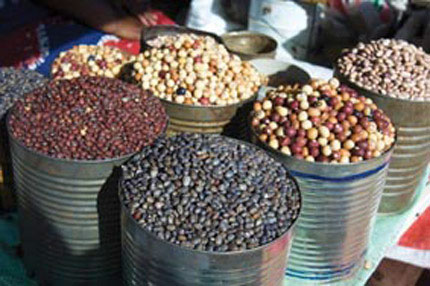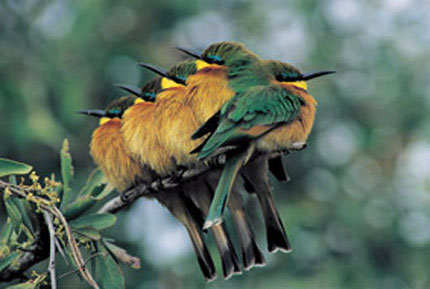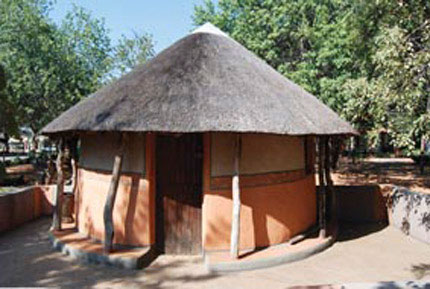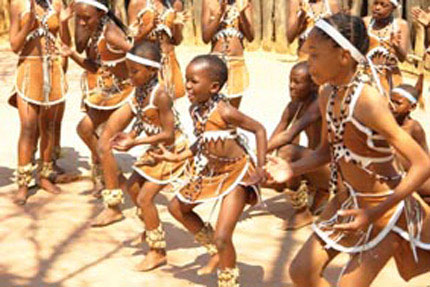

KAZA offers tourism without borders

Working alongside sister organisations in neighbouring states, Botswana is the headquarters of the Kavango Zambezi Transfrontier Conservation Area (KAZA TFCA). As the area’s name suggests, this is the meeting place of two great river basins: the Kavango; and the Zambezi, which rises in Angola before flowing 2,574 km to the Indian Ocean.
It’s a testament to Botswana’s regional leadership in the field of conservation that Kasane was chosen as the base for this important transnational organisation – one that brings together five nations whose borders converge in a comparatively small corner of Africa: Angola, Botswana, Namibia, Zambia and Zimbabwe.
Covering a truly amazing 519,912 sq km (an area about the size of Thailand or larger than Germany and Austria combined), KAZA TFCA was established on the 18th August 2011 by a treaty, with the aim of conserving the shared natural resources of its five member states.
The organisation is also charged with promoting and developing the linked network of conversation areas across its five member states and, where possible, restoring traditional dispersal corridors and wildlife migratory routes.
World-class
At the same time, KAZA TFCA is developing the transnational area into a single world-class tourism destination and working to promote easy border crossings for tourists – something that will reduce visa costs for visitors.
KAZA TFCA’s remit is not just one of wildlife conservation, however; it also aims to ensure the sustainable use of national resources and to improve the lives of local communities through a range of initiatives to reduce poverty.
Finally, KAZA TFCA will be looking at how best to harmonise conservation legislation and natural resource management policies across all five nations.
Transfrontier
Botswana accounts for about 30% of the total land area of the transfrontier area, with Zambia making up 25%, Angola 17% and Namibia and Zimbabwe each contributing about 14%.
The KAZA TFCA is an integrated land-use area comprising Protected Areas (National Parks and Forest Reserves), Conversation Areas (Game-Management areas/Wildlife Management Areas) and Communal Areas, which will gradually expand and link these areas to form one giant wilderness area containing three UNESCO World Heritage Sites: the Victoria Falls, Tsodilo Hills and Okavango Delta.
KAZA TFCA already has the world’s largest population of elephant; it is also home to significant numbers of other animals, including buffalo, rhino, hippo, lion, cheetah, African wild dog, sitatunga and lechwe. All in all, there are some 200 animal species and up to 650 bird species.
Sheer scale
In many ways, KAZA TFCA is beyond comprehension such is the sheer scale of the park. It marks yet another step in Botswana’s efforts to forge close links with its neighbours to ensure that wildlife – which, after all, knows no borders – is conserved for future generations.
Working alongside sister organisations in neighbouring states, Botswana is the headquarters of the Kavango Zambezi Transfrontier Conservation Area (KAZA TFCA). As the area’s name suggests, this is the meeting place of two great river basins: the Kavango; and the Zambezi, which rises in Angola before flowing 2,574 km to the Indian Ocean.
It’s a testament to Botswana’s regional leadership in the field of conservation that Kasane was chosen as the base for this important transnational organisation – one that brings together five nations whose borders converge in a comparatively small corner of Africa: Angola, Botswana, Namibia, Zambia and Zimbabwe.
Covering a truly amazing 519,912 sq km (an area about the size of Thailand or larger than Germany and Austria combined), KAZA TFCA was established on the 18th August 2011 by a treaty, with the aim of conserving the shared natural resources of its five member states.
The organisation is also charged with promoting and developing the linked network of conversation areas across its five member states and, where possible, restoring traditional dispersal corridors and wildlife migratory routes.
World-class
At the same time, KAZA TFCA is developing the transnational area into a single world-class tourism destination and working to promote easy border crossings for tourists – something that will reduce visa costs for visitors.
KAZA TFCA’s remit is not just one of wildlife conservation, however; it also aims to ensure the sustainable use of national resources and to improve the lives of local communities through a range of initiatives to reduce poverty.
Finally, KAZA TFCA will be looking at how best to harmonise conservation legislation and natural resource management policies across all five nations.
Transfrontier
Botswana accounts for about 30% of the total land area of the transfrontier area, with Zambia making up 25%, Angola 17% and Namibia and Zimbabwe each contributing about 14%.
The KAZA TFCA is an integrated land-use area comprising Protected Areas (National Parks and Forest Reserves), Conversation Areas (Game-Management areas/Wildlife Management Areas) and Communal Areas, which will gradually expand and link these areas to form one giant wilderness area containing three UNESCO World Heritage Sites: the Victoria Falls, Tsodilo Hills and Okavango Delta.
KAZA TFCA already has the world’s largest population of elephant; it is also home to significant numbers of other animals, including buffalo, rhino, hippo, lion, cheetah, African wild dog, sitatunga and lechwe. All in all, there are some 200 animal species and up to 650 bird species.
Sheer scale
In many ways, KAZA TFCA is beyond comprehension such is the sheer scale of the park. It marks yet another step in Botswana’s efforts to forge close links with its neighbours to ensure that wildlife – which, after all, knows no borders – is conserved for future generations.


